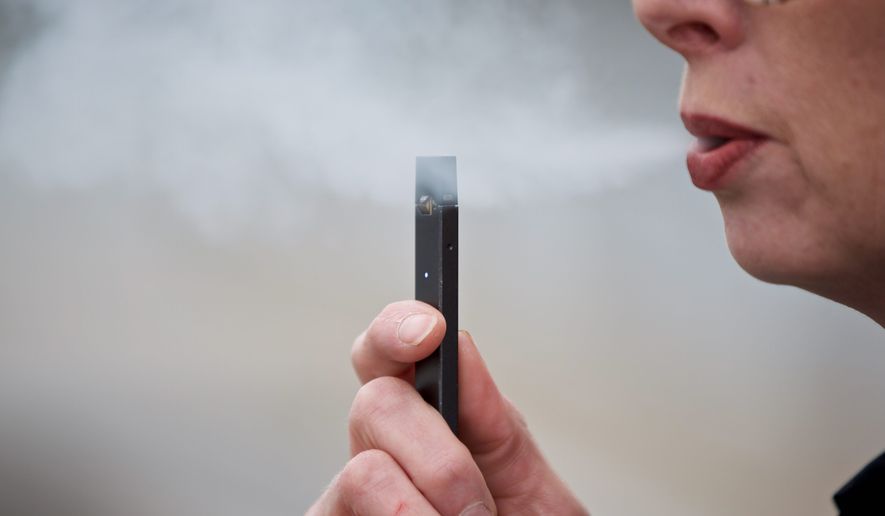The Food and Drug Administration for the first time is seeking public input on proposed additions of potentially harmful chemicals found in e-cigarettes and vaping liquids.
The agency on Monday began accepting comments on adding 19 toxicants to an established list of harmful ingredients found in tobacco products.
“As our oversight and scientific knowledge of tobacco products has evolved, so too should our requirements for manufacturers and importers to provide information about the chemicals or chemical compounds in their products that cause or could cause harm to users and nonusers,” acting FDA Commissioner Ned Sharpless said in a statement.
The agency’s 60-day period for accepting comment ends Oct. 4.
The FDA’s request for comments on the proposed toxicants follows a study in which Yale and Duke university researchers found that compounds in different Juul products could cause irritation and damage to the lungs.
Their study, published late last month, found that compounds in the liquid for e-cigarettes and vaporizers create irritating chemicals called acetals when heated, NPR reported.
Acetals are formed from alcohol and aldehydes, and are used to flavor foods and other commercial products. Hanno Erythropel, the study’s lead author and an associate research scientist for Yale University, told NPR little is known about the effects of aldehydes and acetals when inhaled through e-cigarettes and vaporizers, but some research has shown acetals can irritate airways and prompt an inflammatory response.
Juul could not be reached for comment about the study’s results or the FDA’s proposed additions of ingredients found in e-cigarettes.
Chris Bostic, deputy director on policy for Action on Smoking and Health, said the FDA’s action is a “wonderful step” in the right direction to combat the youth vaping epidemic.
“Let science drive regulation,” he said.
Mr. Bostic noted that although e-cigarettes are safer than traditional combustible cigarettes, they are still harmful. “It’s like being stabbed instead of shot,” he said.
Rather than having tobacco products on the market proven harmful, manufacturers should have to prove their products are safe from the start, he said.
Patrick Reynolds, executive director for the Foundation for a Tobaccofree World, applauded the FDA’s proposed move to add the substances, many of which he said are carcinogenic.
But he said the federal agency should go further and have an outright ban of candy-flavored products that have addicted youth, partially blaming “aggressive, predatory” marketing strategies by companies like Juul and others.
“It’s right out of the playbook Big Tobacco used to market its cigarette use,” Mr. Reynolds said about advertising by e-cigarette manufacturers.
“I hope more cities will follow San Francisco’s lead, and ban the sale of flavored vaping and tobacco products. The candy flavors have contributed to getting so many of our kids addicted, and banning their sale is something the FDA should also do,” he said.
The FDA established the “harmful and potentially harmful constituents” list in 2012 to identify ingredients in tobacco products that are linked to cancer, cardiovascular disease, respiratory effects, developmental or reproductive effects and addiction. There are currently 93 chemicals on the list.
The Federal Food, Drug and Cosmetic Act requires tobacco manufacturers to report the levels of harmful and potentially harmful substances in their products to the FDA. The FDA must publish the amount of these ingredients in each brand of tobacco products in a way that is clear and not misleading to the public.
• Shen Wu Tan can be reached at stan@washingtontimes.com.




Please read our comment policy before commenting.